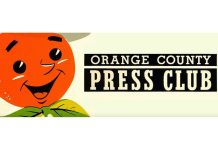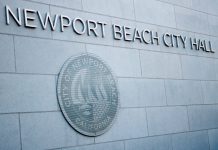The City Council approved four parts of the Balboa Village Parking Management District plan on Tuesday, but continued the residential permit program and directed staff to return with a plan to conduct a survey on the issue. They voted 6-1, with Councilman Mike Henn dissenting.
Council heard a presentation on part two of the comprehensive plan from Newport Beach Principal Planner Jim Campbell.
Council previously approved part one, which included way finding signs, design guidelines, façade improvement program and more.
On Tuesday, Campbell discussed the five different components of the second part of the overall plan: Residential Permit Parking Program; parking management district plan and overlay district; parking benefit district; public parking fees; and other parking programs and permits.
The resident parking permit program was the most discussed component.
It would be broken down into two parts: Phase one would include Island Avenue to Adams Street, including Bay Island and mooring area C; and phase two is Island Avenue to 7th Street.
There would be no priority parking in the area, Campbell explained, but it would allow residents to park there with no citation or violation.
Hours would be from 4 p.m. to 9 a.m. daily, limited to four annual permits per household and would be enforced by license plate recognition.
Permits would cost $16 each. Up to six guests would be allowed for $1 per day.
Several concerns were brought up during public comment time at the meeting on Tuesday. There were a dozen speakers, mostly opposing the plan, voicing their opinions, including Bay Avenue resident Marianne Zippi.
“We residents will be forced to buy a permit in order to park in front of our homes,” she said.
It’s not beneficial to residents and it’s decimatory to a small area of citizens, she said.
“This whole package of initiatives was originally intended to incent new and innovative development down in the Balboa Village,” said Councilman Tony Petros, who is a member of Balboa Village Advisory Committee. It was meant “to revitalize the area.”
Structurally, the parking in the village itself, not the residential areas, was a hindrance to that development, he explained.
The intent of the residential permit program is to protect the residents, not as a revenue generator, Petros added.
Several other residents also complained that the program didn’t consider them or that it wouldn’t solve the problem.
“It’s certainly not going to help the parking situation,” said resident John Hughes.
There was also some support of the plan during public comment.
Resident Deanna Schnabel supported the plan for three main reasons: It’s consistent with other urban beach communities, it adheres to the recommendations of more than half a dozen consultants that the city hired over the years to deal with the parking problems, and it proactively addresses the year-round parking congestion.
The council discussed the residential permits in depth.
“I’m not a big fan of permit parking,” said Councilwoman Nancy Gardner.
She was wondering if the study, completed in late 2012 with a 35 percent response and of those responses, a 68 percent approval rate, was enough and suggested conducting another survey.
“Shouldn’t we go out again, now that we have firm details?” she asked.
The survey in 2012 contained most of the details that the program has today, Campbell answered, the only change is that the permit fees have decreased to $16.
Gardner and other council members were still unsure if it truly represented what the majority of residents wanted.
“I don’t know if you have enough people to really say, ‘Yeah, we really have support for this permit parking,’” Gardner said.
“As we have discussed this over the last four years, every time we have tried to solve a problem in one area we potentially create a problem in another area,” said Mayor Rush Hill.
By passing the other programs, it could potentially create a parking problem in the residential areas, he said.
Members of the public also had questions and comments about landlords, inconvenience of resident permits, using hangtags instead, transparency, growth, expanded permit program area, and more.
The second program is a parking management overlay. This is for the Balboa Village, from Adams Street to A Street.
It would establish a parking management overlay and plan, eliminate off-street parking requirement for most commercial uses, maintain existing off-street parking facilities, allow shared use of parking facilities, and suspend existing and future in-lieu parking fees.
The third program is the parking benefit district and reserves parking revenue from around Balboa Village.
It would discontinue funding, but still maintain the off-street fund and neighborhood enhancement reserves. Funding would be 100 percent of parking non-tidelands related revenues, approximately $347,000 per year. Funds will be used for improvements in the area.
Program four would change parking fees.
Currently, on-street parking is $1.50 per hour. The program would change the price during the peak season (May through September) to $2 per hour for the first two hours and $2.50 thereafter. In the off season, it would change to $1 for the first two hours and then $1.50 thereafter.
“What that will do is help turnover in those parking spaces and incentivize their use,” Campbell explained.
Off-streets parking is currently $1.50 per hour. There would be no changes during the peak season. During the off season, the proposed changes would lower the price to $1 per hour, in all lots (weekdays only in Balboa Pier Lot).
“The purpose of doing this is to lower that fee so we get people to park there more and bring people down to the area,” he noted.
Program five consists of other permits and parking violations.
This would include voluntary employee permits in certain areas, suggested at $50 for an annual permit or $25 for each four-month seasonal permit. The peak season designated area would be along Balboa Boulevard center median, west of Medina Way. The off season area would be in the Balboa Pier parking lot.
The aim is to control where the employees park, he said.
This part of the program would also include city-wide resident permits for $16 per year that would allow them to park in the village for free.
It would also include a parking validation program.
There is also an annual evaluation of all the programs, Petros added.
“What we’re really trying to do is modify behaviors on where people park,” Campbell said. “So we need to watch how this works and see where people are parking, see if there are any unintended consequences, and then make adjustments as we go forward.”





It is all smoke and mirrors when it comes to parking in Balboa. The real issue that night was the gift of the parking lot from the City to the failing museum. Even though a general plan amendment (remember prop Y) will be required for build out ….
All done under the radar, let us hope the incoming council shows more transparency.
when it comes to the museum and the will of the locals instead of “investors” (rather than donors) – the term used by the museum for the folks funding the parking structure .
Museum no, zero, zilch unpaid supporters at the meeting – smelled like a done deal for those of us in attendance.